Zero Turn vs. Riding Mower: Which is Best for Your Lawn?
Are you trying to decide between a zero-turn mower and a riding lawn mower for your yard? Both are excellent choices -- and will get the job done efficiently. However, there are a few key differences between zero-turns and riding mowers. Zero-turn mowers offer speed and maneuverability, making them ideal for larger yards. Conversely, a traditional riding mower is a simpler, more streamlined ride -- but offers more versatility with towing capacity. Let's look at the pros and cons of each type of mower to help you determine the best fit for your lawn care needs.
What is a Zero-Turn Mower?
If you're in the market for a new lawn mower, you might be wondering, "what is a zero-turn mower — and is it the right fit for me?" Zero-turn mowers are riding lawn mowers with a zero-degree turning radius for maximum maneuverability. While traditional riding lawn mowers use a steering wheel to navigate the yard, a zero-turn mower uses lap bars to control the rear wheels. The ability to quickly pivot 360 degrees allows zero-turn mowers to make sharp turns and seamlessly maneuver around trees, flowerbeds, swingsets and more. They're also the perfect lawn care solution for a medium to large-sized yard.
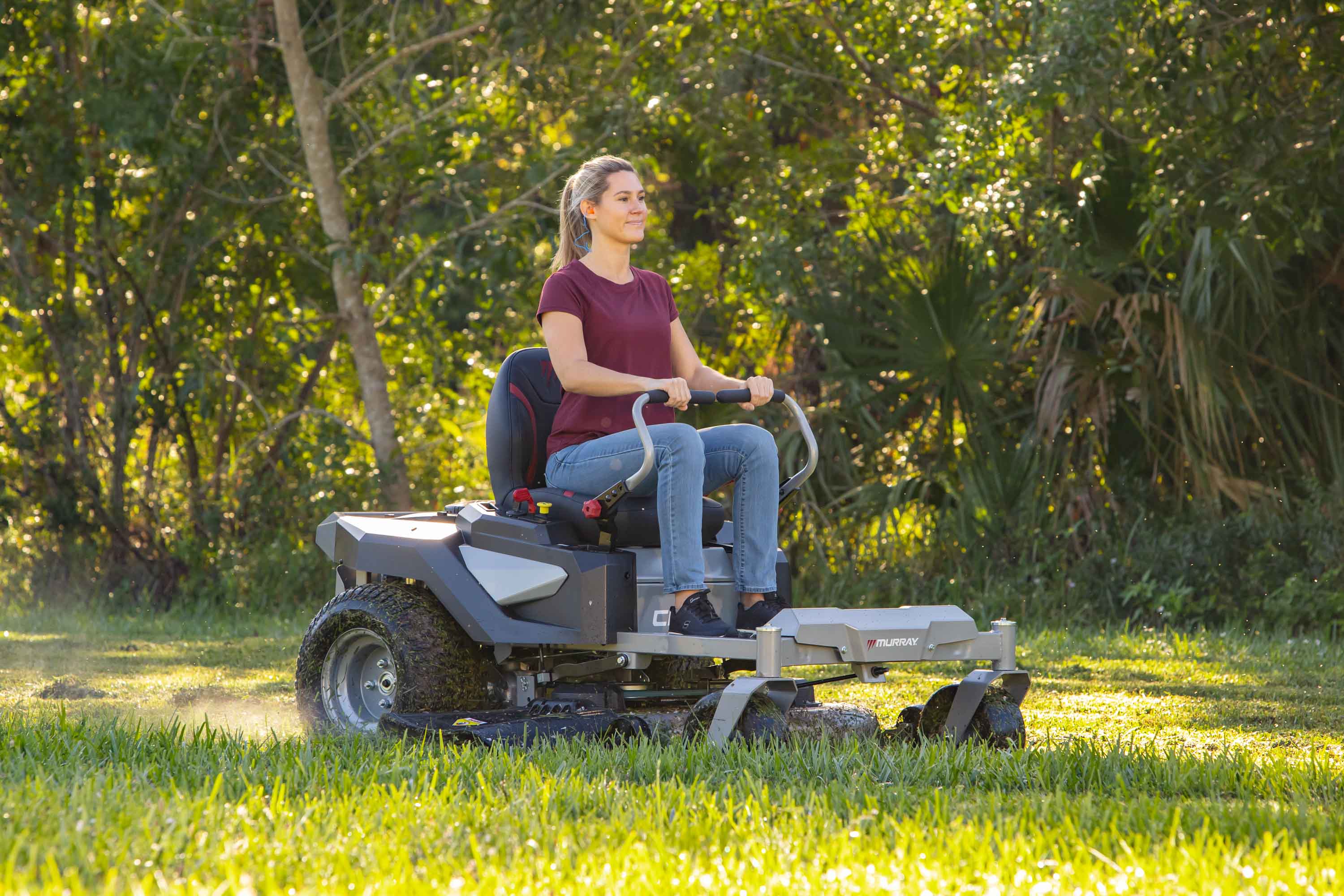
Advantages of a Zero-Turn Mower
If you're in the market for a zero-turn mower, you're ready to elevate your lawn-mowing game. There are a few clear advantages of purchasing a zero-turn mower:
- Superior maneuverability: Zero-turn mowers provide precise cutting by pivoting 360 degrees. Unlike traditional lawn tractors, they easily navigate around obstacles, reducing missed patches and ensuring a more uniform lawn. Zero-turn mowers can also cut close to edges and tight spots for detailed landscapes, minimizing the need for extra trimming.
- Increased speed: Most zero-turn mowers can mow at 7 MPH, significantly faster than traditional riding mowers. These quick speeds allow homeowners to mow large areas quickly, completing the job in less time than a riding mower and substantially less time than a walk-behind mower.
- Enhanced efficiency: Zero-turn mowers offer peak efficiency with quicker speeds, better maneuverability and wider cutting decks. Zero-turn mowers typically have 42" inches or wider mower decks – helping homeowners cover significantly more ground than walk-behind mowers or lawn tractors with smaller cut decks.
- Better lawn quality: A well-maintained lawn requires more than just cutting grass; it needs a clean, even cut without damaging the turf. Zero-turn mowers provide a consistent cut and easily navigate lawn contours, allowing for sharp turns without harming the grass.
- More comfortable: Mowing large areas can be physically demanding, but zero-turn mowers prioritize operator comfort. Many models feature high-back seats with suspension, ergonomic controls, cupholders and vibration-reducing technology to reduce fatigue.
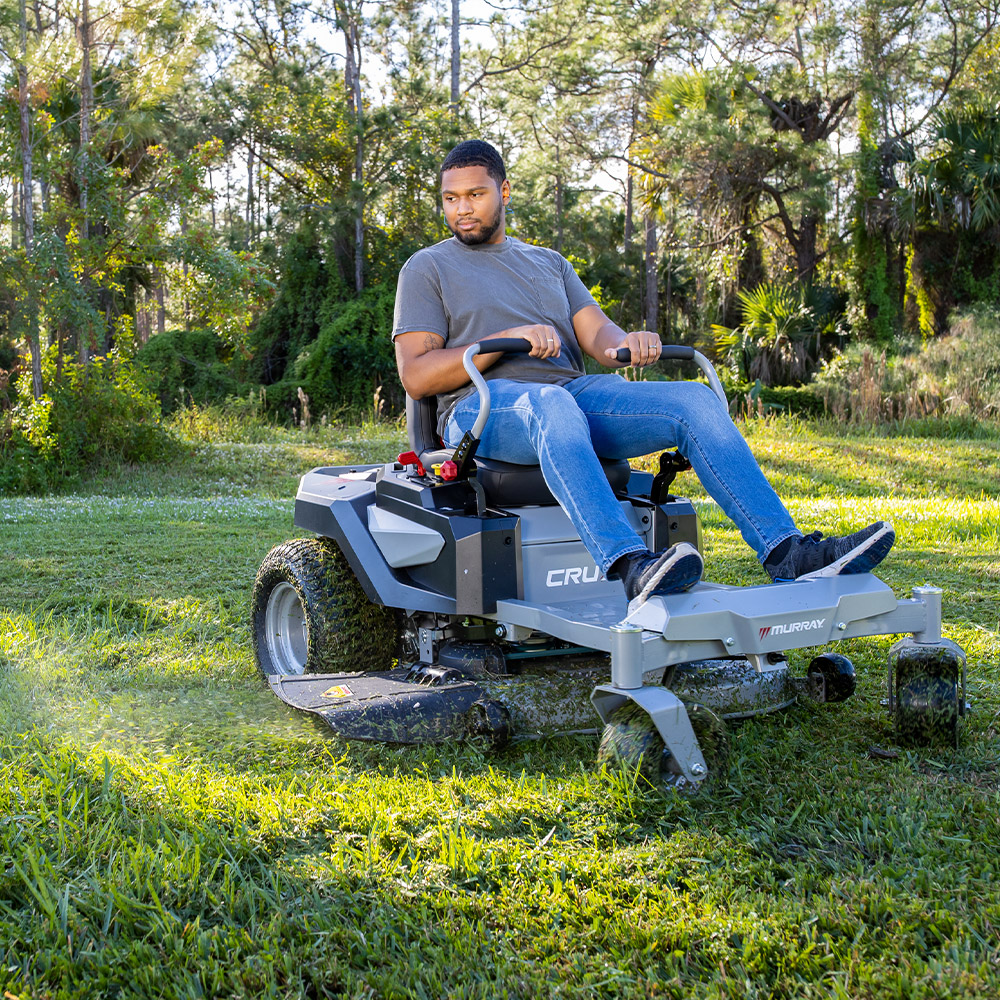
Disadvantages of a Zero-Turn Mower
Does purchasing a zero-turn mower have any disadvantages? Depending on your budget and garage space, there might be a few negatives to consider:
- Cost: Zero-turn mowers are more expensive than traditional riding mowers or walk-behinds. Repairs and maintenance can also be more costly, thanks to the hydrostatic transmissions and specialized parts.
- Struggles on steep terrain: Zero-turn mowers perform best on flat or moderately sloped terrain — typically under 15 degrees. The free-spinning front caster wheels provide less stability and make it harder for zero-turn mowers to cut lawns on a steep slope effectively and safely.
- Limited traction: Zero-turn mowers have front tires with smooth tread, making mowing tricky on wet, slippery or uneven terrain.
- Storage space: Zero-turn mowers are wider than traditional riding mowers, so you'll need more storage space in your garage or shed.
- Driving: Zero-turn mowers use lap bars to steer instead of a steering wheel. For those who haven't driven a zero-turn mower, there is a learning curve to maneuvering lap bars.
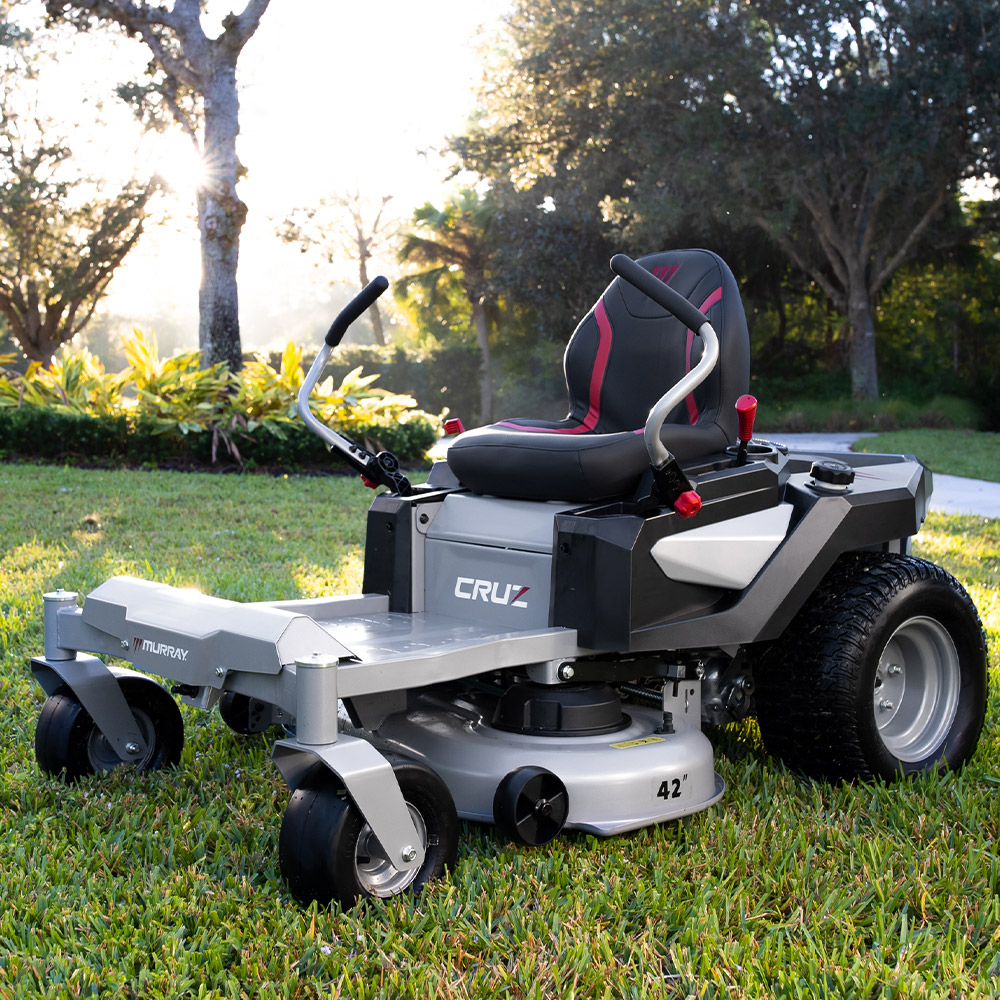
What is a Riding Mower?
Riding mowers — also known as lawn tractors — offer a more familiar approach to mowing. With a traditional steering wheel and tractor-style body, riding mowers have a minimal learning curve for homeowners, making them a popular upgrade from a walk-behind mower. Riding mowers have larger decks than self-propelled and push mowers, helping to get the job done quickly.
Riding mowers also typically have a higher towing capacity, making them a multi-purpose yard tool for hauling around branches, dirt and more. Although they have a fixed turning radius and cannot match the maneuverability of zero-turn mowers, they are an excellent choice for medium to large yards – and even work well on small yards.
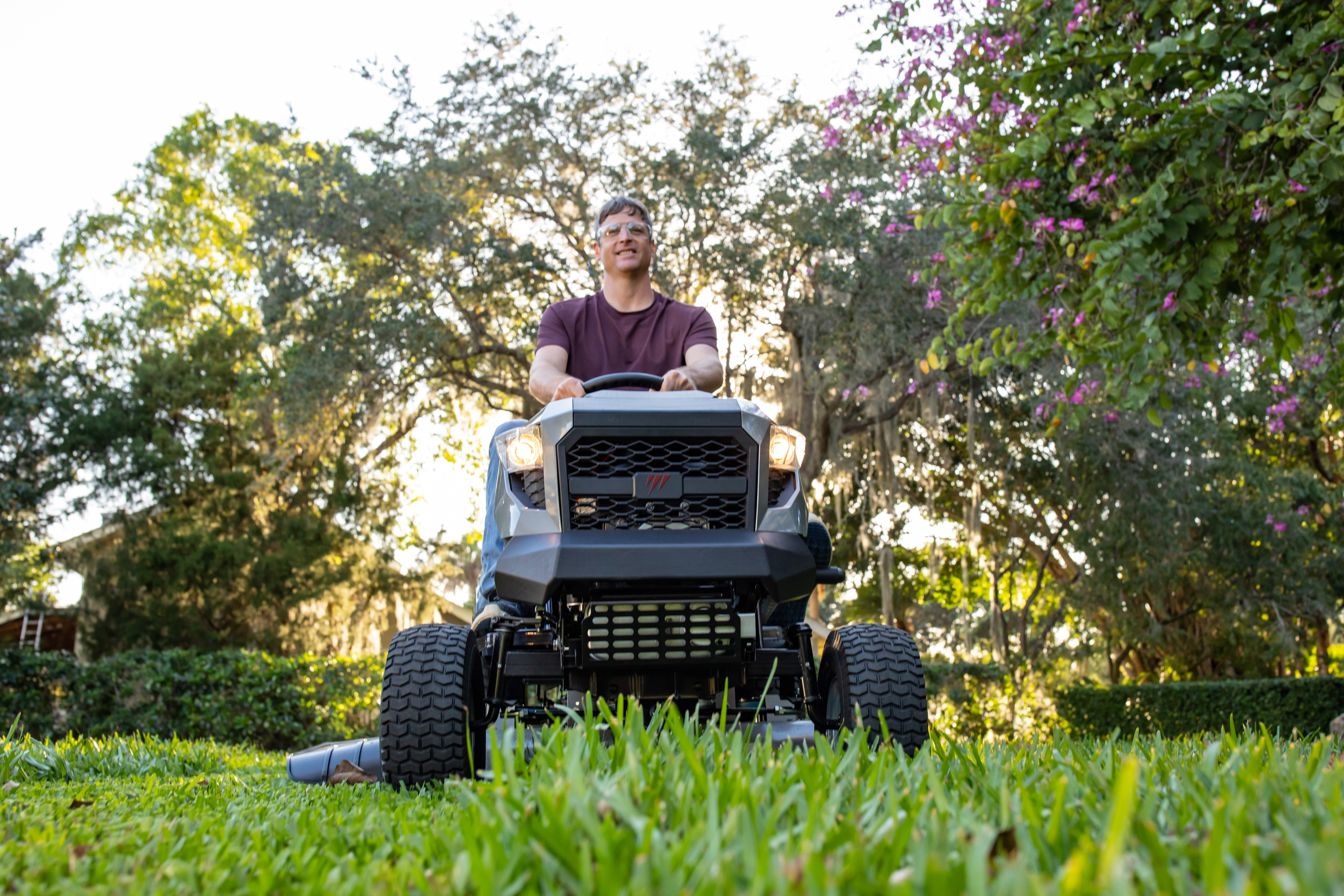
Advantages of a Riding Mower
If you're thinking about purchasing a riding mower, take a deep dive into the advantages of adding it to your lawn care routine:
- Less physical effort: Riding mowers use the same steering wheel setup as cars, making operation simple and intuitive. It also requires significantly less physical effort than push mowers — and less concentration than using a zero-turn mower's lap bars.
- Ideal for medium-sized lawns: Riding lawn mowers are perfect for medium-sized yards ranging from 0.25 to 1+ acres. The fixed turning radius is a great option for yards with a straightforward layout and fewer obstacles to navigate.
- Cost-effective compared to zero-turn lawn mowers: If you're looking to upgrade your mowing game, price is likely an important factor when comparing riding mowers to zero-turn mowers. Riding mowers have a lower price entry point, making them a more cost-effective option for those homeowners on a budget.
- Versatility: Most traditional riding lawn mowers have tractor-like functionalities and a larger array of available accessories. Built-in hitch points allow for easy attachment of accessories to help haul around mulch, plow snow or spread fertilizer – and add value and functionality for homeowners throughout the year.

Disadvantages of a Riding Mower
Does buying a riding lawn mower have any disadvantages? Let's take a look at any potential shortcomings:
- Maneuverability: Riding lawn mowers have a wide turning radius thanks to the fixed steering system. The wide turns are easy to complete on large yards, but it is more challenging to maneuver around landscaping, swing sets and tight spaces.
- Longer mowing time: Riding mowers typically have slightly slower speeds than zero-turn mowers, especially on smaller lawns or dense landscapes that require frequent turns.
- Limited precision: While riding lawn mowers do have a significantly wider cut deck than most walk-behind mowers, the wide turning radius means that you can occasionally miss patches of grass if you're not paying attention. It also might require an edger to get any spots near rocks or landscaping the riding mower missed.

Differences Between Zero-Turn and Riding Mowers
If at-a-glance data is more your speed, take a look at our zero-turn mower vs. riding mower comparison chart:
| Feature | Zero-Turn Mowers | Riding Mowers |
|---|---|---|
| Maneuverability | Exceptional. Can turn on a dime; ideal for tight spaces and obstacles. | Good, but larger turning radius makes tight spaces harder to navigate. |
| Speed | Faster mowing speeds (typically 5-8 mph). | Slower speeds (typically 3-5 mph). |
| Cutting Deck Size | Generally larger decks (42” - 72”), perfect to cover more ground quickly. | Moderate deck sizes (30” - 54”), suitable for medium lawns. |
| Price | More expensive upfront, typically $2,500 - $10,000+. | More affordable, typically $1,500 - $4,000. |
| Comfort & Ergonomics | High-back seats, smoother ride on flat terrain; less comfortable on rough ground. | Generally comfortable with basic suspension; better for varied terrain. |
| Terrain Suitability | Best for flat, open areas; struggles on steep slopes or rough terrain. | More versatile for uneven or hilly terrain. |
| Towing Capacity | Limited or none; not designed for towing attachments. | Can tow carts, spreaders and other attachments. |
| Learning Curve | Steeper; requires practice to master dual-lever controls. | Easy; familiar steering wheel and pedal operation. |
| Size Limitations | Better for large properties (acreage); can be overkill for small yards. | Ideal for small to medium-sized lawns. |
Choosing the Right Mower: Key Considerations
If you're deciding between investing in a zero-turn mower and a riding mower, you can rest assured that both are excellent options. Zero-turn mowers offer higher speeds, large cutting decks and exceptional maneuverability. In contrast, riding lawn mowers are cost-effective, versatile for various outdoor tasks and ideal for mowing sloped terrain. Regardless of your choice, upgrading from a walk-behind mower to a zero-turn or riding mower is a decision you will appreciate for years.
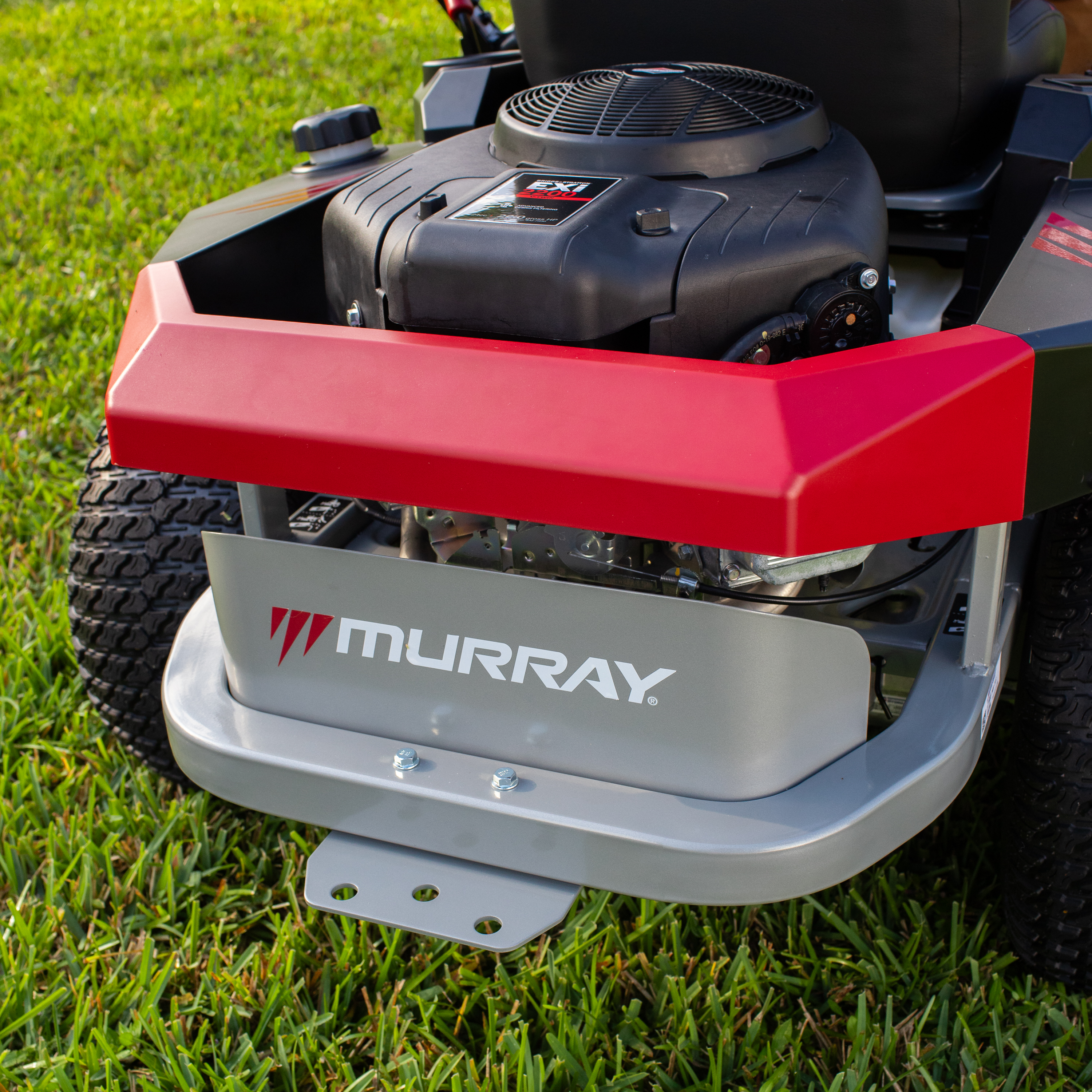
Shop Murray Mowers: Get it Done. Go Have Fun.
If you're looking for affordable and efficient lawn mowers, check out Murray mowers. Found exclusively at Home Depot and built with powerful Briggs & Stratton engines, the Murray line includes the MT100 and MT200 riding lawn mowers and two zero-turn mowers – the 42" Murray Cruz and 50" Murray Cruz XD zero-turn.



